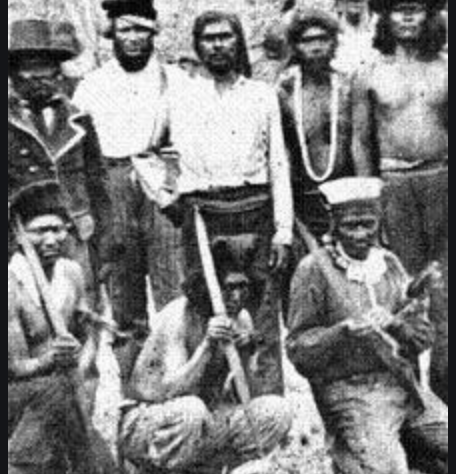The Shoshone are a Native American tribe, who originated in the western Great Basin and spread north and east into present-day Idaho and Wyoming. By 1500, some Eastern Shoshone had crossed the Rocky Mountains into the Great Plains. After 1750, warfare and pressure from the Blackfoot, Crow, Lakota, Cheyenne, and Arapaho pushed Eastern Shoshone south and westward. Some of them moved as far south as Texas, emerging as the Comanche by 1700.
As more European-American settlers migrated west, tensions rose with the indigenous people over competition for territory and resources. Wars occurred throughout the second half of the 19th century. The Northern Shoshone, led by Chief Pocatello, fought during the 1860s with settlers in Idaho (where the city Pocatello was named for him). As more settlers encroached on Shoshone hunting territory, the natives raided farms and ranches for food and attacked immigrants.
The warfare resulted in the Bear River Massacre (1863) when US forces attacked and killed an estimated 410 Northwestern Shoshone, who were at their winter encampment. A large number of the dead were non-combatants, including children, deliberately killed by the soldiers. This was the highest number of deaths which the Shoshone suffered at the hands of United States forces.
During the American Civil War travelers continued to migrate westward along the Westward Expansion Trails. When the Shoshone, along with the Utes participated in attacks on the mail route that ran west out of Fort Laramie, the mail route had to be relocated south of the trail through Wyoming.
Allied with the Bannock, to whom they were related, the Shoshone fought against the United States in the Snake War from 1864 to 1868. They fought US forces together in 1878 in the Bannock War. In 1876, by contrast, the Shoshone fought alongside the U.S. Army in the Battle of the Rosebud against their traditional enemies, the Lakota and Cheyenne.
